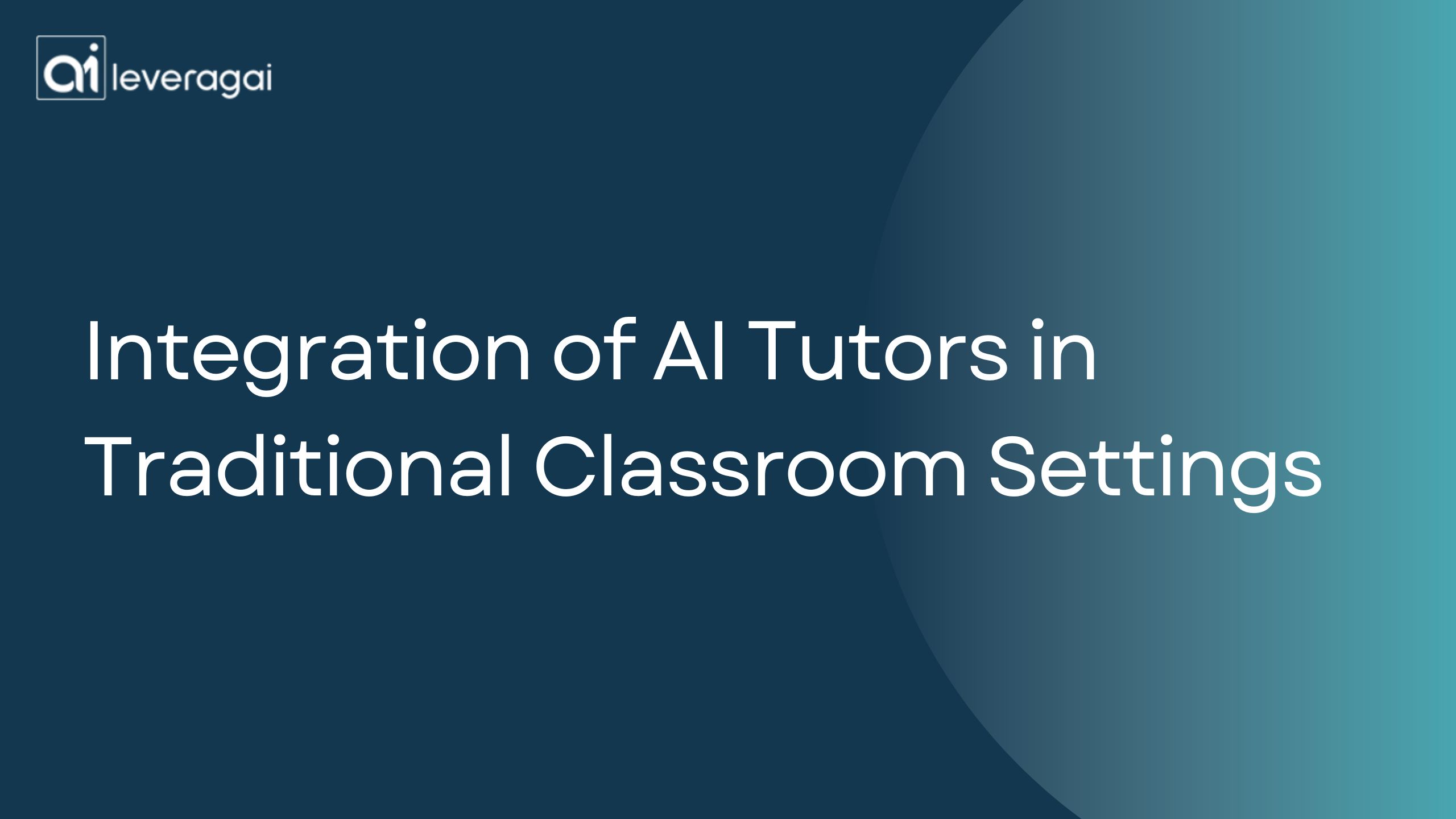Integration of AI Tutors in Traditional Classroom Settings
May 09, 2025 | | min read
Discover how AI tutors are revolutionizing traditional classroom settings by enhancing teaching, assessment, and personalized learning experiences.

The integration of AI tutors in traditional classroom settings is revolutionizing the educational landscape. As we look towards the future, the role of AI in education is expected to expand significantly. However, it's important to note that AI will not replace the inspirational role of teachers. Instead, AI will complement teachers by taking on some of their responsibilities, thereby enhancing the overall learning experience.
Enhancing Teaching and Assessment
AI tutors can assist in teaching by providing personalized learning experiences. They can continuously analyze a learner’s educational status, advancement, and development targets. This continuous analysis helps in tailoring teaching approaches to meet the specific needs of each student. For instance, AI can recommend different teaching strategies to help teachers develop their students more effectively.
Moreover, AI can utilize learning analytics to provide just-in-time information about learners' successes, challenges, and needs. This data can be used to create customized learning plans that address individual student requirements. By doing so, AI tutors ensure that each student receives the support they need to succeed.
In terms of assessment, AI can offer insights into students' memory retention and answer patterns. This allows teachers to understand the logic behind students' responses and gain a deeper understanding of their learning processes. Additionally, AI can analyze emotional factors by examining behaviors in students' answers, providing insights into their emotional readiness for learning.
Traditional assessments often rely on testing small samples of what students have been taught. However, AI-driven assessments can be integrated into meaningful learning activities, such as games and collaborative projects. This approach allows for continuous assessment of all learning activities as they happen, moving away from the conventional stop-and-test method. As described by Luckin et al., "AIEd-driven assessments will be built into meaningful learning activities, such as games and collaborative projects, and will assess all of the learning taking place, as it happens" [2, p. 46].
Supporting Learning Sciences and Motivation
AI tutors can also contribute to the learning sciences by creating better models that influence learner progress and motivation. By combining human power with AI, we can develop more effective educational strategies that cater to the diverse needs of students. This synergy between human and AI capabilities is crucial for the future of education.
China has already started a grand experiment in AI education, which could reshape how the world learns. In recent years, Chinese tech giants have collaborated with educational institutes to enhance AI experiences in schools. This initiative has been supported by tax breaks, academic competition, and the availability of extensive data due to relaxed privacy regulations. Studies have shown that AI-assisted teaching can significantly improve students' scores, similar to the benefits of face-to-face teaching.
For example, AI online teachers can ask students various questions and use algorithms to identify knowledge gaps. They can then tailor study plans to bridge these gaps, ensuring that each student receives a personalized learning experience. This approach has been successfully implemented by platforms like Khan Academy, which is exploring the use of GPT-4 as a classroom assistant for teachers. GPT-4 can create instructional materials and classroom prompts, providing valuable support to educators.
Real-Time Interaction and Personalized Learning
Udacity, another online course provider, uses GPT-4 to create a virtual, on-demand AI tutor. This AI tutor can provide detailed explanations tailored to individual learners, summarize concepts, and even translate learning materials into other languages. Udacity emphasizes that the AI tutor is a "real-time complement to our human mentors," not a replacement. This AI tutor can handle thousands of interactions simultaneously, making it an invaluable resource for both students and teachers.
Quizlet's GenAI study aid is another example of how AI can enhance traditional classroom settings. It offers personalized AI tutoring, automatic flashcards, quick summaries of concepts, and questions that help students understand topics. Over a million students have used Quizlet’s Q-Chat chatbot, and research shows that more than two-thirds of students believe the AI helps them better understand materials and learn faster.
For lifelong learners, AI can make learning any topic easier. Duolingo, a popular language-learning platform, has integrated GPT-4 to provide a more personalized learning experience. The "Explain My Answer" feature offers detailed explanations of users' responses, mimicking the feedback from a human tutor. The "Role Playing" feature allows users to engage with AI personas for immersive language practice in diverse scenarios, such as preparing for a trip to Paris with specific dietary requirements.
Conclusion
The integration of AI tutors in traditional classroom settings holds immense potential for transforming education. By enhancing teaching and assessment, supporting learning sciences and motivation, and providing real-time interaction and personalized learning, AI tutors can significantly improve the learning experience for students. As we continue to explore the possibilities of AI in education, it is essential to combine human and AI capabilities to create a better future for education.

